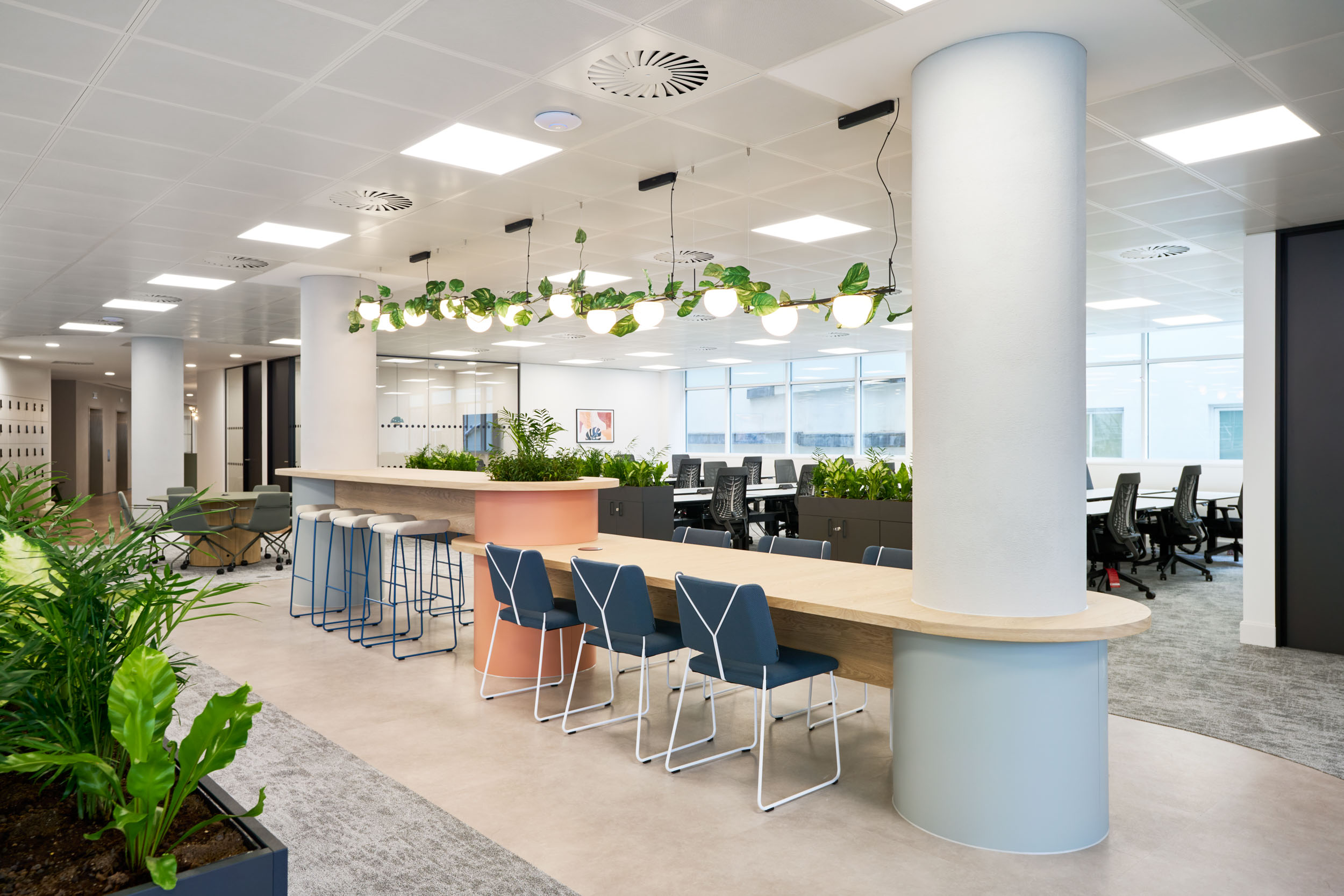How Great Office Design Can Reduce Stress In The Workplace
Scientific research suggests that there are some key environmental design tips that, if implemented, can have a positive reaction to the mood in the workplace.
When entering the world of work, people seem to have the same set of motivations (as identified by Deci, Olafsen and Ryan, 2017): to be competent, i.e. good at doing whatever is important to them; to like their job; to have autonomy or a comfortable amount of control over their life; and to be able to spend time and form relationships with people they choose. Workplaces that want to be successful must recognise and reflect these drives.
Living with uncertainty can be somewhat reduced by workplace policies and design—when we’re stressed we can’t work to our full potential (Lamb and Kwok, 2016). Reinstating workplace rituals, or establishing new ones, and supporting those rituals via physical design, as appropriate, will aid in re-establishing order in people’s lives, help individuals keep track of the passage of time at a macro level, and beat down stress levels.
How stress can be kept in check:
Scent of lavender: You may have installed a new HVAC system at your offices or client sites, and even if an HVAC system is older, you can likely use it to very lightly diffuse scents through offices. If not, consider room diffusers or something similarly low-tech. Research has shown that the scent of lavender is not only relaxing, it has also been linked to increased interpersonal trust (Harada, Kashiwadani, Kanmura, and Kuwaki, 2018; Sellaro, van Dijk, Paccani, Hommel and Colzato, 2015).
Paint it green: If you need to paint or create new signage wherever possible use colours that are not very saturated but light, an example of this is a sage green with lots of white mixed into it. Research has shown that they are relaxing to look at (Valdez and Mehrabian, 1994).
Cut the visual clutter: Doing so will not only lower stress levels but also boost professional performance (Renner, 2020). New cabinets, with non-transparent doors or drawers may be required to get things out of sight.
Fix the furniture: Make sure that at least a few chairs and sofas have prospect and refuge—this may just require that you rearrange the furniture. People feel very comfortable and relaxed in this sort of seating arrangement because they feel safe at a basic, primordial level and have a view out over the nearby areas (Kellert, 2012).
Sounds of nature: If there’s a sound system in a workplace, play nature soundtracks like a soundscape of burbling brooks, grasses gently rustling in a breeze and birds quietly calling out to each other encourages us to feel relaxed (Benfield, Taff, Newman and Smyth, 2014).
Leafy plants: Green leafy plants are very relaxing to look at and doing so helps cut stress (Kellert, 2012). Good ‘fake’ plants can be just as effective for reducing stress and they have the added benefit of being low maintenance.

Curvy lines: Looking at curving lines is relaxing while rectilinear ones recall thoughts of efficiency (Ghoshal et al, 2016), so any new upholstery fabrics, furnishings, signs, etc, should have more curvy lines in them than straight ones.
Sit-stand desks: If you’re buying new desks, you may want to consider sit-stand ones because the options they provide give people a feeling of control over their lives, and with comfortable control comes lower stress levels and better performance (Lyengar and Lepper, 2000; O’Neill, 2010). If new desks aren’t in the offing, consider other ways to give people environmental control, whatever is reasonable in the context and not too jarring to established ways of working.
There are many easy-to-implement design options that can increase employee comfort and contribute to keeping their stress levels in check. Take a look at some of our stress-reducing workplaces here.
This article is based on a research piece 'Stressed out? Here’s how design can help your people relax’, authored by Sally Augustin, environmental psychologist and a principal at Design With Science, for WORKTECH Academy.











